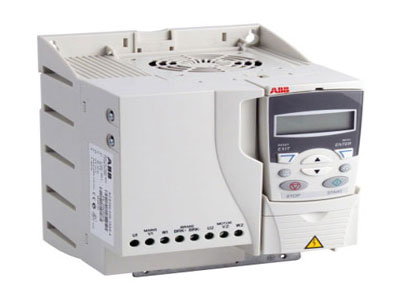What Is PLC Control System?
Key Takeaway
A PLC control system is an industrial computer that continuously monitors input devices and makes decisions based on a custom program to control output devices. PLCs are used to automate processes by receiving signals from sensors and switches, processing the data, and triggering actions like turning on motors or lights. This system enhances efficiency, reliability, and precision in industrial operations, making it essential for modern automation tasks. The PLC control system’s flexibility allows it to be programmed for various applications, from simple machine functions to complex manufacturing processes.
Definition and Components of a PLC Control System
A PLC control system comprises several essential components, including the PLC itself, input/output modules, sensors, actuators, and a human-machine interface (HMI). The PLC acts as the brain of the system, processing input signals from sensors, executing control algorithms, and generating output signals to actuators. Input/output modules serve as the interface between the PLC and the external world, facilitating communication with field devices. Sensors detect changes in the environment, while actuators perform physical actions based on PLC commands. The HMI allows operators to monitor and interact with the PLC system, providing valuable insights into process performance.

How PLC Control Systems Work
PLC control systems function through a cyclical process known as scanning, which ensures seamless automation of industrial processes. This process begins with the PLC scanning input signals received from sensors deployed throughout the machinery or process. These signals serve as real-time feedback on the status of various parameters, such as temperature, pressure, or position. Upon receiving input signals, the PLC then evaluates them against predefined control algorithms stored in its memory. These algorithms, meticulously crafted by engineers, dictate the logic that governs the operation of the machinery or process.
Based on the evaluation of input signals and the programmed logic, the PLC generates output signals to control actuators and other devices. These output signals trigger actions such as starting or stopping motors, opening or closing valves, or adjusting process parameters. This continuous scanning process occurs rapidly and repeatedly, ensuring that the machinery operates in real-time accordance with the desired control logic. Ultimately, PLCs enable engineers to achieve precise regulation and monitoring of industrial processes, facilitating enhanced efficiency, productivity, and reliability across a wide range of applications.
Applications of PLC Control Systems
PLC control systems serve as the backbone of various industrial applications, showcasing their versatility and indispensability across sectors. In manufacturing plants, PLCs orchestrate the seamless operation of assembly lines, conveyor systems, and robotic arms, ensuring efficient production processes and optimal resource utilization. Similarly, in the automotive industry, PLCs play a critical role in controlling machining operations, welding robots, and quality inspection systems, guaranteeing precision and consistency in manufacturing processes.
Beyond manufacturing and automotive, PLCs find extensive application in utilities such as water treatment plants, power distribution systems, and HVAC systems. In water treatment plants, PLCs monitor and regulate complex processes involved in purification and distribution, ensuring the supply of clean and safe water to communities. Moreover, PLCs manage power distribution systems, optimizing energy usage and enhancing grid stability. In HVAC systems, PLCs control heating, ventilation, and air conditioning units, maintaining comfortable indoor environments while minimizing energy consumption.
Overall, PLC control systems contribute significantly to improving efficiency, productivity, and reliability across diverse industrial sectors, making them an integral component of modern automation solutions.
Benefits of Using PLC Control Systems
The benefits of incorporating PLC control systems into industrial automation are multifaceted and significant. One key advantage is the inherent flexibility and scalability offered by PLCs, allowing engineers to easily adapt and reprogram systems to meet evolving process requirements. Moreover, PLCs are renowned for their robustness and durability, capable of withstanding harsh industrial environments while maintaining reliable operation over prolonged periods.
Additionally, PLCs streamline fault diagnosis and troubleshooting processes, enabling rapid identification and resolution of issues to minimize downtime and maximize productivity. Furthermore, their compatibility with various control systems facilitates seamless integration, empowering organizations to develop comprehensive automation solutions tailored to their specific needs and objectives.
Overall, the utilization of PLC control systems translates into tangible benefits such as enhanced efficiency, improved product quality, and heightened safety standards across industrial operations. These advantages underscore the pivotal role of PLCs in driving operational excellence and competitive advantage in the industrial landscape.
Future Trends in PLC Control Systems
The future of PLC control systems holds exciting prospects driven by the integration of cutting-edge technologies. One notable trend is the convergence of PLCs with Artificial Intelligence (AI) and the Internet of Things (IoT), heralding a new era of automation and intelligence. AI algorithms, when coupled with PLCs, can harness the power of data analytics to optimize process parameters and forecast equipment failures, preemptively addressing potential issues.
Similarly, IoT-enabled PLCs facilitate remote monitoring and predictive maintenance, empowering organizations to proactively manage their industrial assets and minimize unplanned downtime. Moreover, advancements in cybersecurity will be paramount in safeguarding PLC control systems against evolving cyber threats, ensuring the integrity and confidentiality of critical data.
As industries increasingly embrace digital transformation, the fusion of PLCs with AI, IoT, and robust cybersecurity measures promises to revolutionize industrial automation, driving efficiency, productivity, and competitiveness. These emerging trends underscore the pivotal role of PLC control systems in shaping the future of industrial operations.
Conclusion
In conclusion, PLC control systems serve as the cornerstone of industrial automation, driving efficiency, reliability, and innovation across various sectors. With their robust functionality, flexibility, and adaptability, PLCs continue to revolutionize manufacturing processes, utilities, and infrastructure worldwide. As we embrace the era of smart manufacturing and digital transformation, PLCs remain indispensable, enabling organizations to stay competitive in an ever-evolving landscape. By understanding the intricacies of PLC control systems and embracing emerging technologies, engineers can harness the full potential of automation to propel their businesses forward.
